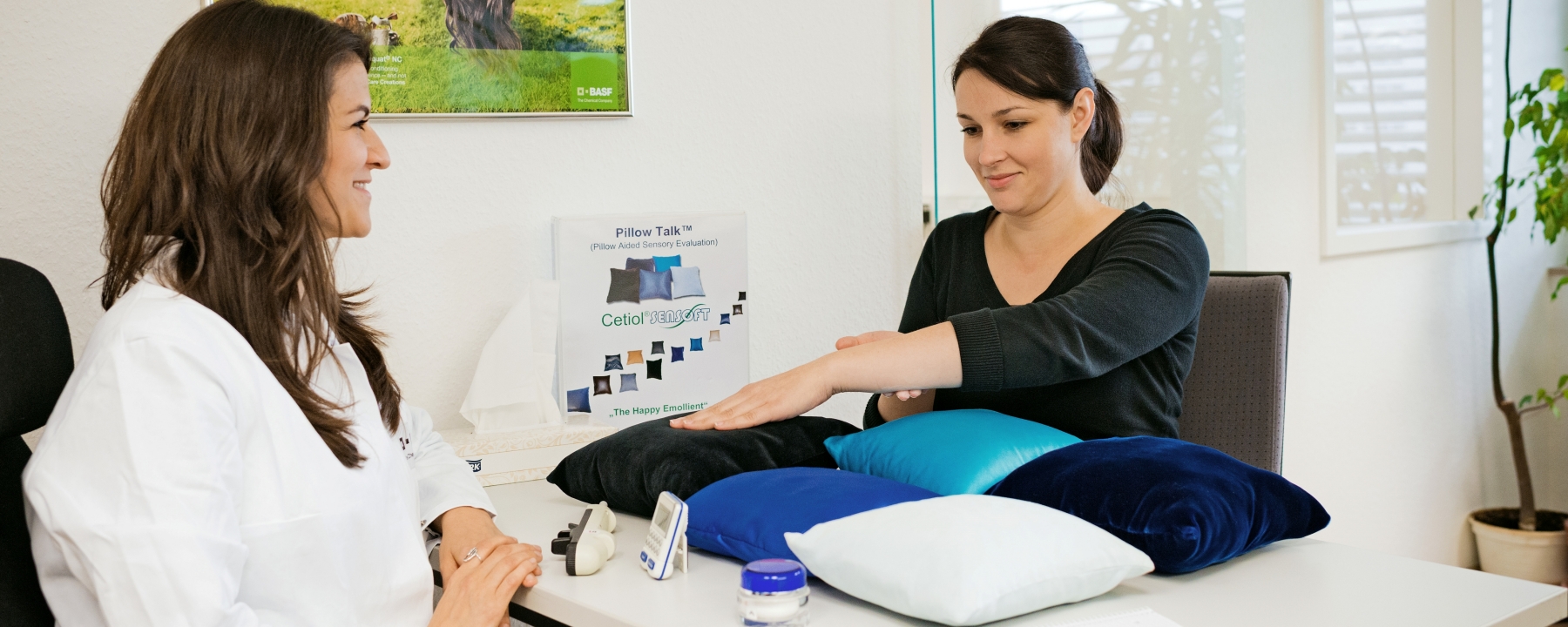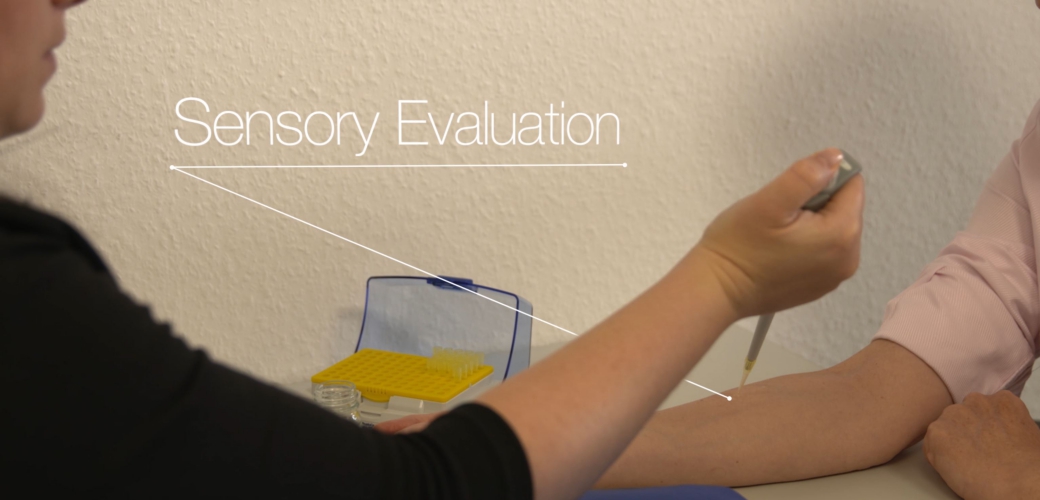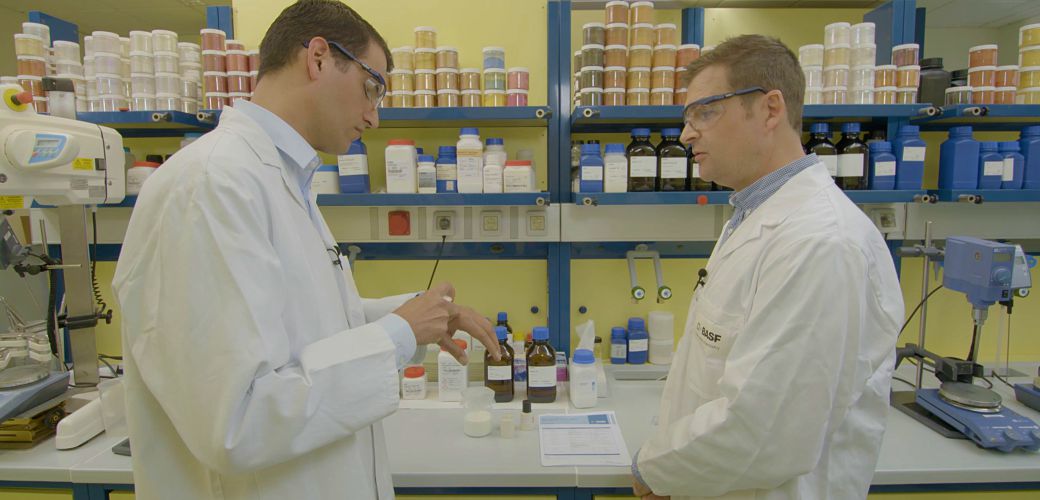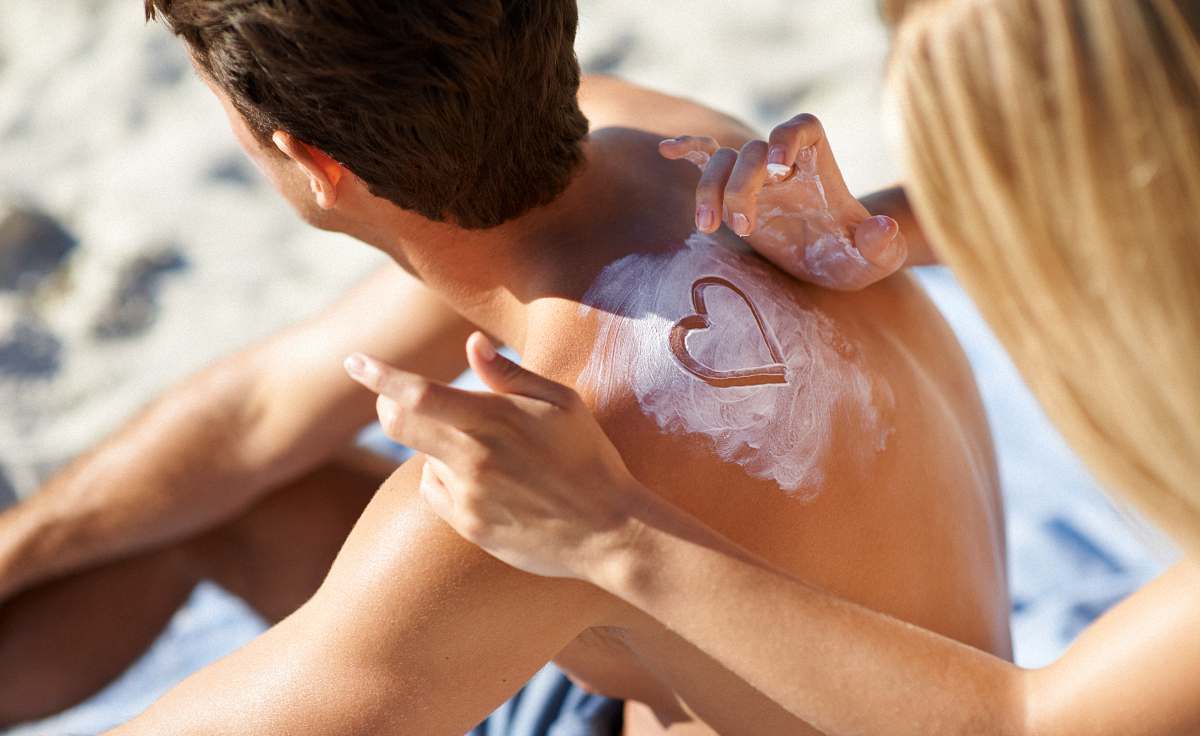
Trends & research
The crux of feelings
What does your voice and the muscles in your face have to do with what you feel when using face care products? We'll let you know.
Do you like the feeling on your skin after putting on lotion? Some do, some don’t. How can what we feel on our skin be measured to create some type of standard? The answer is by specifying surfaces that can be compared to the feeling we have on our skin. This is how "Pillow Talk" was created, a method that is used to help describe how it "feels" when certain creams and lotions are applied to our skin.
What is a velvety skin feeling? And what about a silky feeling? Of course, just like the fabrics used for evening dresses or fine underwear, you want to have the same luxurious feeling on your skin too. When you cover soft pillows with these fabrics, you get pillows that can actually speak.
And the pillow says: Touch me and compare me to your skin. Does it feel more velvety or silky? Or is there another pillow that feels like your skin? Our blissful look shows that we like the feeling. It is easy to analyze a facial expression with facial recognition without anyone even needing to say anything about feelings. Sometimes though, it’s really difficult. The pillow with the vinyl tablecloth cover causes the opposite response. That is when you see people screwing up their face: Eww! That’s waxy! It's as dull as the cream that was just applied.
Our voice can also reveal whether we like putting on cosmetics or not: hmm, eww or ohh! Sounds either get quieter or slower, using pauses. Or they might speed up whether lower or higher voices. This allows feelings to be analyzed without the person having to actually use words to describe their feelings.
Let’s get more specific. It’s all about our facial muscles. Their movement can be measured with electrodes that are placed stuck on the corresponding areas of the skin. The thing is that muscles move even before we can describe what we are feeling. The brain sends impulses to the muscles, which then contract accordingly.
There are very small changes in our facial expressions. These mini-movements are almost invisible to the naked eye. But they can be measured. And these results indicate a pleasant feeling (the smile muscles in the cheek) or a negative feeling (the forehead creasing).
Seven different emotional effect variables can be calculated measuring these and other body signals:
- Relevance
- Stress
- Scepticism
- Attraction
- Closeness
- Trust
- Liking
Therefore, it’s possible to objectively evaluate how the cream feels when applied because these emotional reactions are automatic. They just happen and can’t really be controlled. All of these measurements can be used to evaluate cosmetic applications objectively.
Based on this information, manufacturers can market their products accordingly and end consumers will find the best product that fits their wants, ideas and personal feelings. No matter whether you are looking for day care, skin or sun protection, we believe, and so do our customers, that face care should be fun. Not only will you always notice when you are enjoying the pleasant feeling from your product, the people around you will too.
More information
It depends on the feeling
Some people don’t like sunscreen very much. They don’t like the feeling of putting on sunscreen: too sticky, too thick, too greasy. However, modern formulations are very effective and feel extremely pleasant.
Read moreTastes are different
Tastes are different and everyone likes different consistencies that they apply to the body and face. In the past, there was only the thick, firm sunscreen. Today the range is more diverse and individual.
Read more



